The Tree of Life
Blessed is the man that walketh not in the counsel of the ungodly, nor standeth in the way of sinners, nor sitteth in the seat of the scornful.
But his delight is in the law of the Lord; and in his law doth he meditate day and night.
And he shall be like a tree planted by the rivers of water, that bringeth forth his fruit in his season; his leaf also shall not wither; and whatsoever he doeth shall prosper.[1]
We are confronted with this man and tree metaphor in the first chapter of Psalm. And of course, worth repeating, we have this mysterious Tree of Life that is in the Garden of Eden, which yields knowledge of Good and Evil…
And the LORD God commanded the man, saying: ‘Of every tree of the garden thou mayest freely eat;
but of the tree of the knowledge of good and evil, thou shalt not eat of it; for in the day that thou eatest thereof thou shalt surely die.’[2]
And then upon eating the Tree… everything changes of course.
We find this tree metaphor not ubiquitous necessarily but certainly throughout the Bible, Old and New Testament and certainly there is something to it. It’s fair to say that from a spiritual perspective, this tree is ripe for metaphor. That’s a bad joke right? Have I gone so far down this rabbit hole at this point that I am telling not just philosophy jokes but religious ones? Mystical ones, I’ll give myself at least a little credit. Having said that, and perhaps spoiled this whole section with humor, nonetheless a deep meaning can be pruned from it if properly understood.
Like most things spiritual, and esoteric (which by definition means hidden), they are hidden in the ancient texts, encoded as it were. The typical understanding is that the knowledge could only be properly decoded, illuminated as it were, with a proper teacher, who could lead the student to knowledge. You could argue that this is true for most things worthwhile. That’s something to ponder.
In The Garden story, Elohim tells Adam and Eve not to eat from the Tree of Life. Not to partake in its fruit. Then enter the serpent and the veil of course, and its game over. What we find though, initially, is that after they have eaten from the Tree of Life, they feel the need to cover themselves. Why is that?
Because once they eat from the Tree of Life, they become embodied, i.e. take human (material) physical form. This embodied state is distinguished from their prior state, prior to their Fall, when they had no such knowledge – when they literally walked with God.
A hidden meaning.
Taking this one step further, what we see here is that the Tree of Life is the human form.
We are the Tree of Life.
This is another secret of the Garden. Another hidden message tucked away in Genesis. Hiding in plain sight.
The Kabbalists understood this, and hence they give us the Tree of Life, the 10 Sefirot – the countings or emanations of heaven. And we see in this tradition, certainly in the Sēpher Yəṣîrâh which sits at the heart of it, notion of as above so below an integral part of the teaching. The macrocosm and microcosm, universe and man. Examples are given throughout showing how his Creation (Elohim) manifests in the universe and in man – the ten, the seven, the three and the twelve.
The kabbalists made the fantastic claim that their mystical teachings derived from the Garden of Eden. This suggests that Kabbalah conveys our original nature: the unbounded awareness of Adam and Eve. We have lost this nature, the most ancient tradition, as the inevitable consequence of tasting the fruit of knowledge, the price of maturity of culture. The kabbalist yearns to recover that primordial tradition, to regain cosmic consciousness, without renouncing the world.[3]
The primary text of the Kabbalists is of course the Zohar, which we do not cover in detail here (that will be another book no doubt) but this passage jumped out at me while I was editing this work. It confirms my intuition that there is much more in the Garden of Eden story than most see, and the Tree and the Snake are much closer to us than we understand. Daniel, respectfully, misses the fruit – embodiment connection, which fleshes out (no pun intended) the whole story with the snake being the veil, the sweet-talking voice inside our heads that keeps us chasing desire and pleasure, and the Tree which by eating we became. His take on Adam and Eve however hits the mark here, they are within us – they are our higher selves.
We are the Tree, and we can see from the Kabbalah tradition, as conserved from Abraham himself (Sēpher Yəṣîrâh), the Tree is derived from the Seed, as all things are really. Complementing the ten Sefirot (not 11, not 9 – this is oddly explicit in the text), we have the 22 letters by which he seals the universe, breathes life into it you might say. Through the word, just as we found in the Gospel of John and just as we see in the Upanishads.
We have the three mother letters, the seven doubles, and the 12 singles. The first three, the mothers, are almost a precise mirror of the way AUM (OM) is properly understood in the Upanishadic tradition, as three distinct parts of the same whole through which the universe is created, preserved and ultimately destroyed – as the vibration of the sound goes so goes the world you might say.
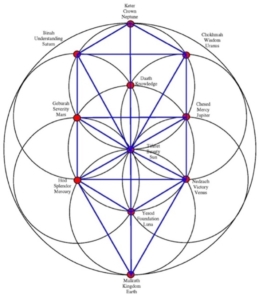
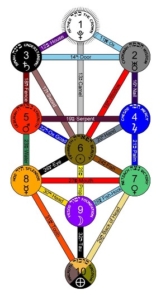
Tree of Life from Seed of Life with Numbers.
Then we have the seven double letters – the seven days of the week, seven planets – and then in the macrocosm we have the 12 signs of the Zodiac.
In classic Kabbalistic philosophy, mysticism, these 10 Sefirot, which correspond to the Numbers 1 through 10, are laid out on a grid such as the figures above. The transposition onto the Seed of Life is a natural one. Geometrically then it fits into the geometrical model proposed by Genesis and the Tetractys. This is no accident of course.
From bottom to top then, we can pull this planetary spheres, chakras and Tree symbology together as:
- Creation (Malkuth).
- The Ten, completing the description of the material universe.
- Earth
- The physical universe itself to which we are bound.
- Foundation (Yesod)
- The Nine. Three threes which support the creation in embodied form.
- Root chakra more or less.
- Moon
- Empathy and Victory (Hod), or Glory and Triumph (Nezah)
- learning and assertion
- base desires and motivations
- The Seven and the Eight, pillars and harmony of the universe to be established here.
- Karma Yogaof sorts, think Bhagavad Gītā.
- Mercury and Venus. We are still in the world here but in the realm of the gods as well.
- Beauty or Love (Tiferet)
- This is the heart chakra, the center of the Tree from which life, love flows.
- This is the Sun, Ra.
- The perfect 6, two 3s. 6 days of creation.
- Strength and Kindness (Gevurah), or Judgement and Mercy (Hesed)
- karma and dharma
- higher order motivations and drivers
- a sort of Bhakti Yoga
- Jupiter and Mars. The Lords of the gods. Male attributes.
- The 4 (elements) and the 5 (senses), the very foundations of physical existence here.
- Understanding or Intelligence (Binah) and Wisdom (Hokhmah)
- highest order pair, contemplation
- Jnana Yoga
- The two and the three, higher order metaphysics
- Polar opposites, Erotic forces, fundamental cosmic principles.
- Saturn and Uranus, these planets are little more ethereal and subtle.
- Spirit or Bliss (Keter)
- The One, the great Monad.
- Pluto is placed here on the top of the head.
- Centering the rest of the system in a way, providing for its ultimate source.
- Pure spirit, resting at the crown of the Tree.
Did the ancient Greeks learn from the Hebrews? Absolutely. Their clash with Ancient Egypt is well documented. Did the Hebrews know about and did they have ties with ancient Babylon? Of course, this is also well documented. It was the Magi of course that foretold the coming of Christ.
India is a bit further off, a long way back then. I suspect that the core knowledge, or at least parts of it, was exchanged (as I propose in Theology Reconsidered) much further back than this, than history (1st millennium BCE). The Indo-European lineage gives us a hint of this, these so-called Proto-Indo-Europeans whomever they were. Regardless at some level they are our ancestors. We are all Aryan for the most part in the West whether we like it or not really. It’s in our language, in our heads, and embedded in our worldview and understanding of ourselves in the cosmos. You can agree or disagree with this but it does not change its truth.
You could argue that virtually all life forms, in their basic metaphysical structure could be overlaid on the Seed of Life geometrically. This is what makes it the Seed right? But nonetheless this is it’s connection to Western esotericism and sacred Geometry in particular and it is helpful to guide us through at least a cursory understanding of how the Kabbalists frame existence with this Tree metaphor (and metaphysics).
Somewhat surprisingly perhaps, we find no reference to the Tree of Life, or any tree for that matter, in the Sēpher Yəṣîrâh. We also do not have an explicit mention of the 10 Sefirot in this text, although they are spoke of as the hokiest of holy for the knowledge of God more or less. Seems important so…
The lack of reference in the Sēpher Yəṣîrâh (to the Tree of Life) speaks to a complementary tradition, complementary teachings – sometimes these are hidden (there were reasons for doing this of course, things are only being revealed by bozos like me because everything is on the Internet now) – but in this case it is captured in the Zohar, what is considered to be the primary source of Jewish Kabbalistic thought.
Not to belittle this mystical tradition in any way, or limit it – its vastness and beauty are boundless – but it basically rests on the notion of this divine sound, the Hebrew alphabet (which we see clearly in the Sēpher Yəṣîrâh) and then the revelatory, encoded nature of the Old Testament (Torah) textual tradition.
Following this idea, or aligned with it, is the notion of what the Sefirot are, these Countings of the Lord you might say. They are extrapolated from the scripture itself, a metaphysical extrapolation of the text you might call it. Every mystical tradition needs their engineers and the Hebrews are not short of them clearly (present company included).
Sefirot (/sfɪˈroʊt, ˈsfɪroʊt/; Hebrew: סְפִירוֹת səp̄îrôṯ), meaning emanations, are the 10 attributes/emanations in Kabbalah, through which Ein Sof (The Infinite) reveals himself and continuously creates both the physical realm and the chain of higher metaphysical realms (Seder hishtalshelus). The term is alternatively transliterated into English as sephirot/sephiroth, singular sefirah/sephirah etc.
The sefirot are described as channels of divine creative life force or consciousness through which the unknowable divine essence is revealed to mankind. The first sefirah, Keter, describes the divine superconscious Will that is beyond conscious intellect. The next three sefirot (Chokhmah, Binah and Da’at) describe three levels of conscious divine intellect. In particular, Da’at represents Keter in its knowable form, the concept of knowledge. Will and knowledge are corresponding somewhat dependent opposites. The seven subsequent sefirot (Chesed, Gevurah, Tiferet, Netzach, Hod, Yesod and Malkuth) describe the primary and secondary conscious divine emotions.
The sefirot of the left side and the sefira of Malkuth are feminine, as the female principle in Kabbalah describes a vessel that receives the outward male light, then inwardly nurtures and gives birth to the sefirot below them. Kabbalah sees the human soul as mirroring the divine (after Genesis 1:27, “God created man in His own image, in the image of God He created him, male and female He created them”), and more widely, all creations as reflections of their life source in the sefirot. Therefore, the sefirot also describe the spiritual life of man, break down man’s psychology process, and constitute the conceptual paradigm in Kabbalah for understanding everything.
Through this, the sefirot are related to the structure of the body and are reformed into partzufim (personas). Underlying the structural purpose of each sefirah is a hidden motivational force which is understood best by comparison with a corresponding psychological state in human spiritual experience.[4]
The arrangement of these ten, their connection with the 22 (the 3, 7 and 12) is laid out in the Sēpher Yəṣîrâh as we discussed, providing for a good metaphysical rendering of this so-called Tree of Life. Us – its Da Vinci’s Vitruvian Man before Vitruvian Man, rendered in encoded Geometry and number rather than picture form. Da Vinci was trying to recover this of course. He probably did not have access to the same library we do so you need to cut him some slack. His artwork was amazing obviously.[5]
A good rendering of this Tree of Life out of the Sēpher Yəṣîrâh can be found in the Figure below. Going from right to left, in typical Hebrew fashion then, we can see the Tree of Life, with its male and female sides as it were, branches, overlaid on the spherical symbology of the Four, which follows the Sēpher Yəṣîrâh text (spirit, air, water and earth, fire). Next to the planetary mapping we are presented with the metaphysical explanations, again aligning with the Four.
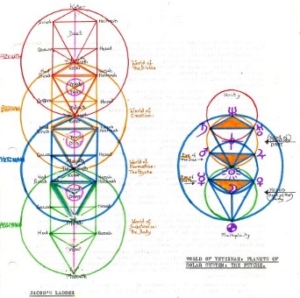
Tree of Life from Sēpher Yəṣîrâh[6]
Out of the Four come then Ten, laid out in a planetary alignment (which again follows the Sēpher Yəṣîrâh text). The overlay onto Man is no doubt a later, derived concept. We’re still in cosmology land here, we are world creating. Man doesn’t exist yet.
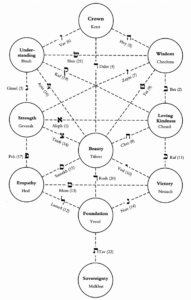 Tree of Life with 32 mystical paths.[7]
Tree of Life with 32 mystical paths.[7]
This second Tree of Life rendering includes all 32 paths of wisdom, with the letter (sound really) indication running through the axes of the Tree you night say. It’s giving the Tree life, lighting it up you might say. The sound, the energy, is part of the Tree.
These metaphysical constructs, these paths of wisdom – the Ten – are not just mapped to Number as Ten, but understood in this tradition as the ten paths to wisdom, knowledge. Ten ways that the veil might be lifted, even for a moment, you might say.
_____________________________________________________________________________________________________________________
[1] Psalm Chapter 1 verses 1-3. King James translation from https://www.biblegateway.com/passage/?search=Psalm%201&version=KJV.
[2] Genesis 2:17
[3] From The Essential Kabbalah by Daniel C. Matt 1995 Harper San Francisco 1995. Pg. 2. The primary text of the Kabbalists is of course the Zohar, which we do not cover in detail here (that will be another book no doubt) but this passage jumped out at me while I was editing this work. It confirms my intuition that there is much more in the Garden of Eve story than most see, and the Tree and the Snake are much closer to us than we understand. Daniel, respectfully, misses the fruit – embodiment connection, which fleshes out (no pun intended) the whole story with the snake being the veil, the sweet talking voice inside our heads that keeps us chasing desire and pleasure, and the Tree which by eating we became.
[4] Adapted from Intro section on Sefirot: Wikipedia contributors. (2021, January 22). Sefirot. In Wikipedia, The Free Encyclopedia. Retrieved 17:40, January 23, 2021, from https://en.wikipedia.org/w/index.php?title=Sefirot&oldid=1002054972.
[5] There are Da Vinci sketches of the flower of life as well, this is clearly geometric imagery that was fascinating to him. That underpinned his work in a way, structurally speaking.
[6] I cannot find the exact reference to where I pulled this image from but I believe it is the work of a Jane Abrams whose blog on eastern and western esotericism contains several good posts on Kabbalistic Tree of Life symbolism, as well as some beautiful artwork, like this drawing which is the very best rendering of how these Sefirot lay out on a geometric seed of life grid, coupled with the metaphysical principles beside the rendering, that I could fine. A good example can be found on her blog here at https://janeadamsart.wordpress.com/2012/10/15/the-seven-year-cycles-on-the-tree-of-life/.
[7] From Structuralism and Kabbalah: Sciences of Mysticism or Mystifications of Science? By Jerome Levi, 2009. Anthropological Quarterly, Vol. 82, No. 4, pp. 929-984. Institute for Ethnographic Research (IFER) a part of George Washington University.

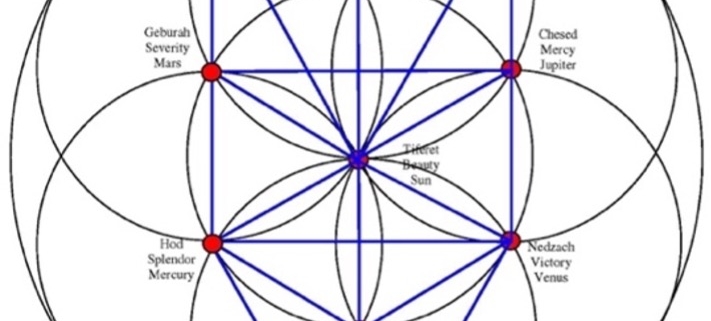
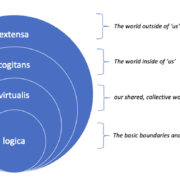
 by Leon Van Kraayenburg
by Leon Van Kraayenburg 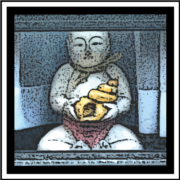
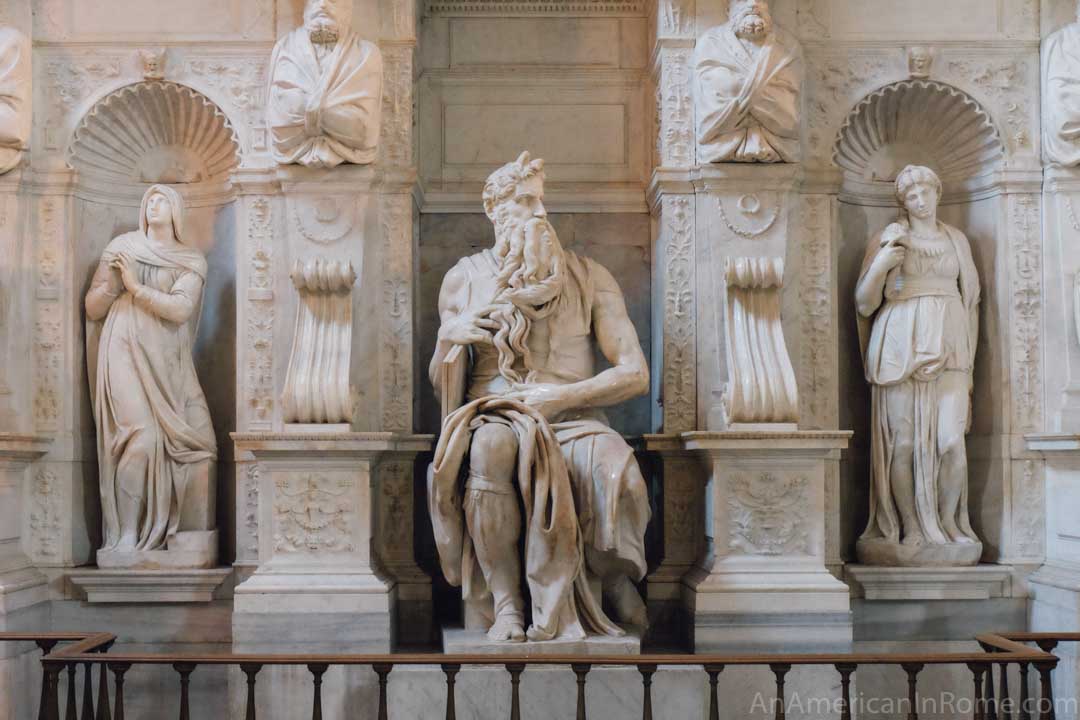


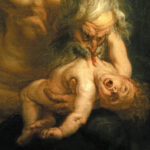
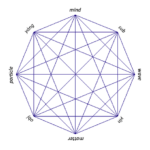
Leave a Reply
Want to join the discussion?Feel free to contribute!